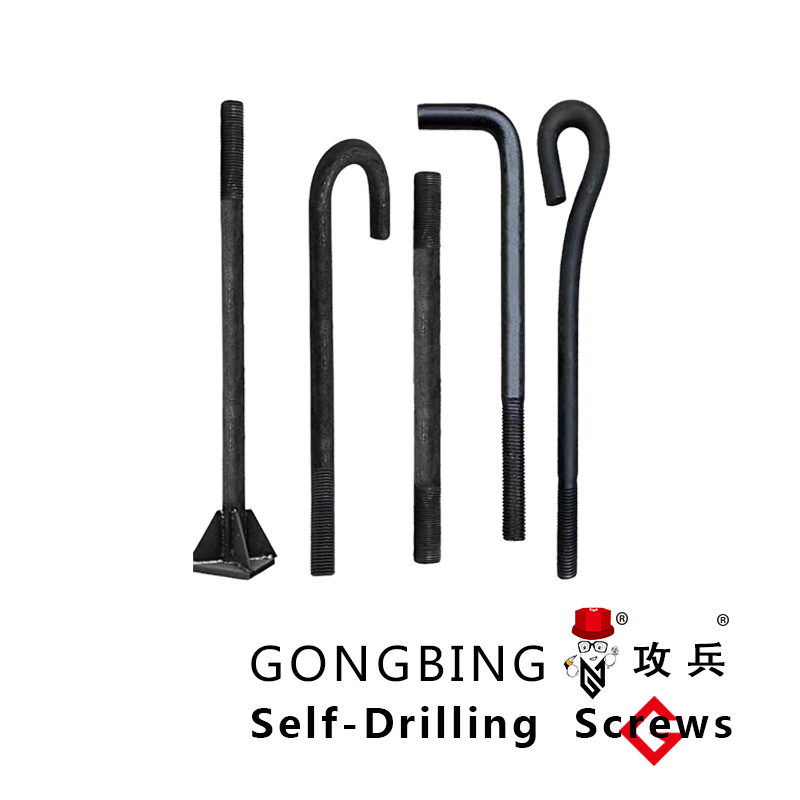Design Considerations for Foundation Bolt Selection and Installation Techniques
Foundation Bolts Design An Essential Component for Structural Integrity
Foundation bolts are critical fasteners used to anchor structures to their foundations. Often overlooked, these components play a pivotal role in ensuring the stability and longevity of various constructions, from residential buildings to towering skyscrapers. This article delves into the design considerations, types, and best practices for foundation bolts, emphasizing their importance in structural engineering.
Importance of Foundation Bolts
Foundation bolts serve two primary purposes they anchor the structure to the foundation and absorb dynamic loads caused by environmental factors like wind, seismic activity, and operational vibrations. Inadequate anchorage can lead to structural failure, making the design of these bolts vital for safety and performance. A well-designed foundation bolt not only enhances the resilience of a structure but also contributes to its overall integrity.
Design Considerations
The design of foundation bolts involves several key considerations that engineers must account for to ensure their effectiveness
1. Load Requirements The type and magnitude of loads that the bolts will experience, including tension, shear, and bending, dictate their design. Structural engineers conduct load assessments to determine the appropriate size, grade, and quantity of bolts required.
2. Material Selection Foundation bolts are typically made from steel due to its high tensile strength and durability. However, the specific grade of steel (e.g., ASTM A307, ASTM A325) must be chosen based on environmental conditions and corrosion resistance requirements. For aggressive environments, such as coastal areas or industrial settings, galvanized or stainless steel bolts may be necessary.
3. Bolt Geometry The diameter, length, and thread configuration of the bolts are crucial design aspects. Larger diameters may offer higher load capacities, while specific thread types can enhance grip and distribution of forces. The embedment depth into the foundation is also critical, as it affects the bolt's ability to resist pull-out forces.
4. Seismic and Wind Resistance In areas prone to earthquakes or high winds, foundation bolts must be designed to accommodate these dynamic loads. This often involves using oversized bolts, increased spacing, or additional bracing to enhance stability.
5. Nut and Washer Selection The proper selection of nuts and washers is equally important. Washers help distribute the load over a larger surface area, and lock nuts can prevent loosening due to vibration. The compatibility of materials between the bolt, nut, and washer should also be considered to prevent corrosion.
foundation bolts design

Types of Foundation Bolts
There are several types of foundation bolts used in construction
1. Straight Bolts Commonly used for their simplicity and ease of installation. They are often embedded directly into concrete foundations.
2. L-Shaped Bolts Typically used for anchoring structural steel or heavy machinery, L-shaped bolts provide additional resistance against pull-out forces.
3. J-Bolts These are often used in situations where a hook or tie-down is needed, such as in securing playground equipment or constructing frames.
4. Embedded Bolts Designed for applications where the bolt must be embedded in concrete, providing enhanced stability via larger surface area engagement.
Best Practices in Foundation Bolt Design
To ensure the functionality and durability of foundation bolts, several best practices should be followed
- Regular Inspections Periodic checks for signs of wear or corrosion can prevent failures before they occur. - Quality Control All bolts should meet established industry standards and specifications to guarantee their performance. - Proper Installation Following manufacturer instructions during installation is vital. This includes using the correct torque, ensuring proper alignment, and avoiding over-tightening, which can lead to bolt failure.
Conclusion
In the realm of structural engineering, the design of foundation bolts is an indispensable aspect that requires careful consideration and expertise. By understanding the load requirements, material properties, and environmental factors, engineers can create robust anchoring solutions that not only meet safety standards but also enhance the overall resilience of structures. Therefore, while often taken for granted, foundation bolts are essential to the stability and safety of any building project.
-
Wedge Anchor Bolts: Secure Fastening SolutionsНовостиAug.05,2025
-
Insulation Fixings: Secure and Durable SolutionsНовостиAug.05,2025
-
Full Threaded Studs: Versatile Fastening SolutionsНовостиAug.05,2025
-
Expanding Fasteners: Secure and Reliable SolutionsНовостиAug.05,2025
-
Butterfly Toggle Anchors: Secure and Easy to UseНовостиAug.05,2025
-
Bracing Solutions for Steel StructuresНовостиAug.05,2025
